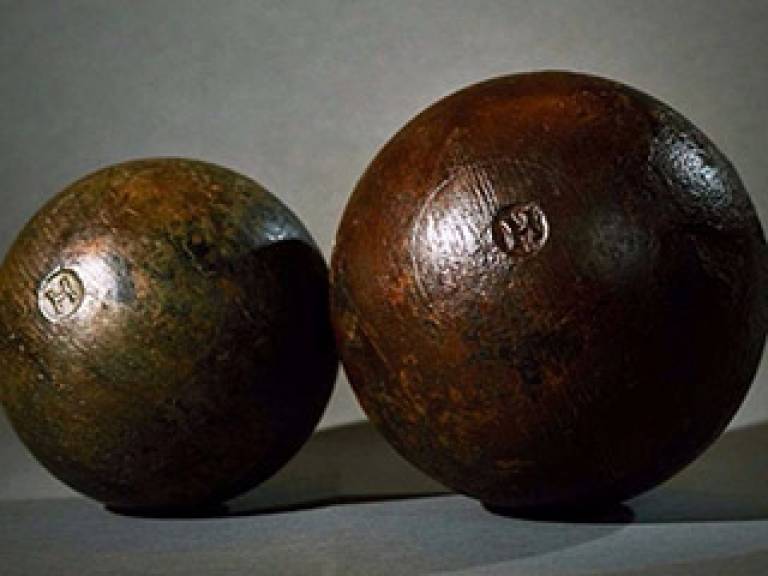Going ballistic! Exploring the secrets of the Mary Rose's cannonballs
13 March 2018
Major advances into how to protect and preserve cannonballs found on Henry VIII's flagship vessel, The Mary Rose, have been made through a ground-breaking partnership between UCL, The Mary Rose and Diamond Light Source.

Researchers, including Institute PhD student Hayley Simon, have been using powerful X-rays to look inside cannonballs found on the famous Tudor ship to try to find a way of preserving the shot, which will corrode if it is put on display.
The 1,200 cannonballs from the ship, that sank in 1545 and was raised from the sea in 1982, are currently stored in low humidity containers away from public gaze. The research team applied various conservation methods to the cannonballs to identify which method worked best. Building on that research, the team used a powerful X-ray facility called Diamond Light Source, the UK's national synchrotron science facility in Oxfordshire, which allowed them to measure the differences in the corrosion profiles and trace them to the treatments applied.
According to Hayley:
- "We wanted to find a way to preserve the cannonballs for future generations to come. Through understanding how the different treatments interact with the cannonballs, we can develop new treatment techniques that will allow these important artefacts to be displayed for the public to see."
The results of Diamond's bright light X-rays has given the research team some insight into iron production during this time period. Working at the cutting edge of conservation science, the perspective of how elements work in the corrosion process, they hope, will lead to conservation solutions.
According to Ian Freestone, Hayley's PhD Supervisor:
- "High quality science on archaeological artefacts frequently requires a sample to be taken, as this is the only way we can get the accuracy that we need. These excellent results were only possible because of the foresight of the Mary Rose Trust in allowing material to be removed from a small number of the cannonballs."
Read more
- UCL News
- The Mary Rose press release
- Diamond Light Source
- BBC News
- Daily Mail
- Smithsonian News
- The Telegraph
 Close
Close

